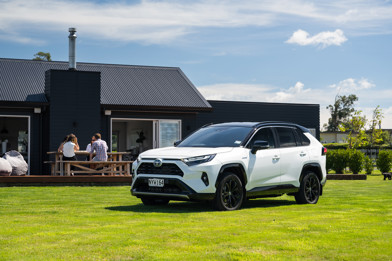Ligier JS4
When Formula One manufacturers decide to build road cars, the result is usually a roaring, fire-breathing performance car, and initially that is exactly what Ligier did with the Maserati V6-powered JS2 mid-engined sports car.
But then that damned energy crisis that came along in 1973 scared the hell out of the performance car market, and for some ungodly reason Ligier decided to produce the JS4, which was essentially a blue box on lawn mower wheels powered by a 49cc 2-stroke engine that drove the rear wheels via a belt.
Small, affordable micro-cars ARE a good idea. It’s just that Formula One manufacturers probably aren’t the best people to make them. And to think, silly McLaren only produces supercars...
Holden Starfire Four engine

In response to the ongoing energy crisis of the ‘70s (damn you energy crisis! You are responsible for so much pain!) Holden thought it a good idea to lop a couple of cylinders off their venerable inline six to create a fuel efficient 1.9-litre four-cylinder engine they could throw into various models, thus the “Starfire” engine was born.
The Starfire soon became known as the Misfire however, mainly due to the fact that it was crap. Better performance could have been obtained if they had simply slapped lawnmower engines into the VC Commodore, and the need to push the hell out of the engine to approach anything that could even be considered even poor performance meant that fuel consumption was similar to the straight sixes. And, yes, you could get a 4-cylinder Commodore wagon with a tow bar...
Merkur

Back in the 1980s Ford decided it would be a very good idea to import and market some of the company’s European cars in the USA under the newly-created “Merkur” brand, which seemed like a very good idea, especially given that their competition was, well, American cars.
However the idea quickly turned sour due to the wildly fluctuation US dollar and the fact that the American public couldn’t get their heads around the euro-styling of the Sierra XR4i and Scorpio. Not to mention the fact that the brand had a very, very silly name.
AutoWorld

Americans love their theme parks, right? Americans also love their cars, so what would be better than a theme park that celebrates the car? As it turned
out, just about anything.
Intended to do wonderful thing for the city of Flint, Michigan - the birthplace of both Buick and General Motors, and home to a large number of car manufacturing plants, the closing of which contributed to its eventual decline - AutoWorld folded less than two years after it opened, largely because: A) It was an odd mixture of theme park and
museum that, rather than being interesting, was just plain weird, and B) The city of Flint was a desolate hellhole with soaring crime rates, racial tension, widespread poverty and crumbling buildings.
“Let’s get in the car kids! We’re going to see a strange automotive-themed amusement park in an ugly, dying city! And afterwards, you may get to see daddy be stabbed in the car park by a desperate,homeless ex-auto worker!”
Fordlandia

Henry Ford’s attempt to become self-sufficient by setting up his own rubber plantation in Brazil seemed like a good idea at the time, but Henry’s go
od ol’ fashioned American pig-headedness and deeply ingrained racism essentially made sure it would fail spectacularly.
When Henry came up with the idea in the 1920s, all rubber was naturally produced and imported from the tropics. Ford decided to cut out the middle men and grow his own, so to speak. Except Ford royally buggered it up by being too, well, American.
Although workers were paid double the going rate and provided with cheap, modern housing, things soon descended into rioting as the native workers were forced into an “All-American” lifestyle, utterly alien to them. Ford prohibited tobacco and alcohol, only provided American food, such as hamburgers and forced workers to work a traditional American working day of 9 to 5, meaning they had to work in the brutal midday sun, rather than the early morning/late afternoon they were previously used to. Ford eventually sold the land for a US$20 million loss, the equivalent of more than US$200 million today.


